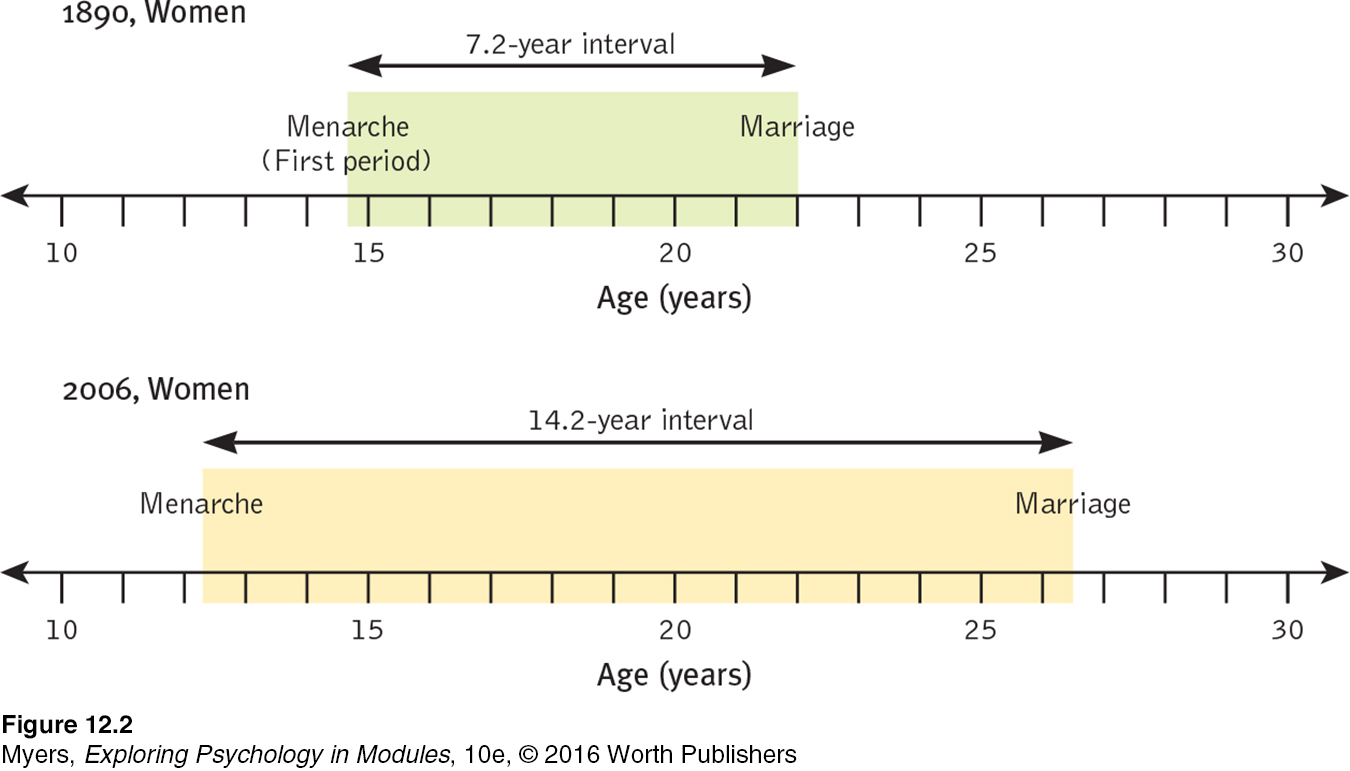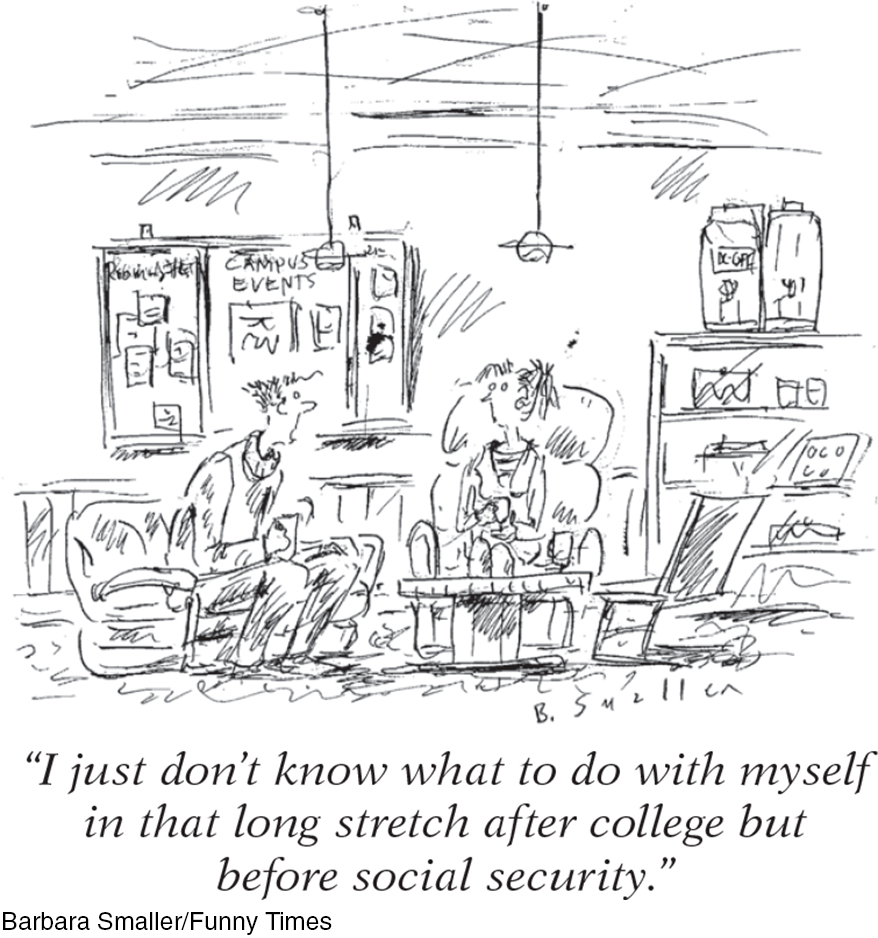12.4 Emerging Adulthood
12-5 What is emerging adulthood?
In the Western world, adolescence now roughly corresponds to the teen years. At earlier times, and in other parts of the world today, this slice of life has been much smaller (Baumeister & Tice, 1986). Shortly after sexual maturity, young people would assume adult responsibilities and status. The event might be celebrated with an elaborate initiation—a public rite of passage. The new adult would then work, marry, and have children.
When schooling became compulsory in many Western countries, independence was put on hold until after graduation. Adolescents are now taking more time to establish themselves as adults. In the United States, for example, the average age at first marriage has increased more than 5 years since 1960 (to 29 for men, 27 for women). In 1960, three in four women and two in three men had, by age 30, finished school, left home, become financially independent, married, and had a child. Today, fewer than half of 30-year-old women and one-third of men have met these five milestones (Henig, 2010).
emerging adulthood a period from about age 18 to the mid-twenties, when many in Western cultures are no longer adolescents but have not yet achieved full independence as adults.
Together, later independence and earlier sexual maturity have widened the once-brief interlude between biological maturity and social independence (FIGURE 12.2). In prosperous communities, the time from 18 to the mid-twenties is an increasingly not-yet-settled phase of life, now often called emerging adulthood (Arnett, 2006, 2007; Reitzle, 2006). No longer adolescents, these emerging adults, having not yet assumed full adult responsibilities and independence, feel “in between.” After high school, those who enter the job market or go to college may be managing their own time and priorities more than ever before. Yet they may be doing so from their parents’ home—unable to afford their own place and perhaps still emotionally dependent as well. Recognizing today’s more gradually emerging adulthood, the U.S. government now allows dependent children up to age 26 to remain on their parents’ health insurance (Cohen, 2010).
Page 157

Figure 4.17: FIGURE 12.2 The transition to adulthood is being stretched from both ends In the 1890s, the average interval between a woman’s first menstrual period and marriage, which typically marked a transition to adulthood, was about 7 years; a century later in industrialized countries it was about 14 years (Finer & Philbin, 2014; Guttmacher, 1994). Although many adults are unmarried, later marriage combines with prolonged education and earlier menarche to help stretch out the transition to adulthood.

Barbara Smaller/Funny Times
RETRIEVE IT
Match the psychosocial development stage below with the issue that Erikson believed we wrestle with at that stage.
Question
Infancy Toddlerhood Preschool Elementary school Adolescence Young adulthood Middle adulthood Late adulthood | Trust vs. mistrust Competence vs. inferiority Initiative vs. guilt Integrity vs. despair Intimacy vs. isolation Autonomy vs. shame and doubt Generativity vs. stagnation Identity vs. role confusion |
| Correct Matches: |

